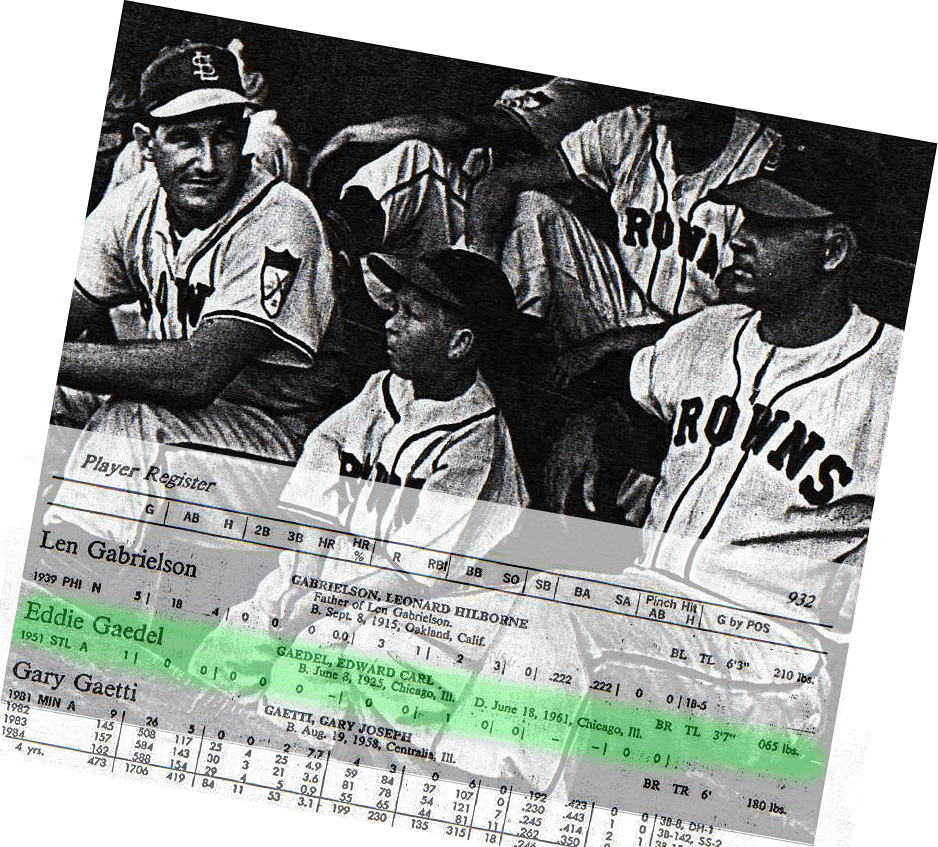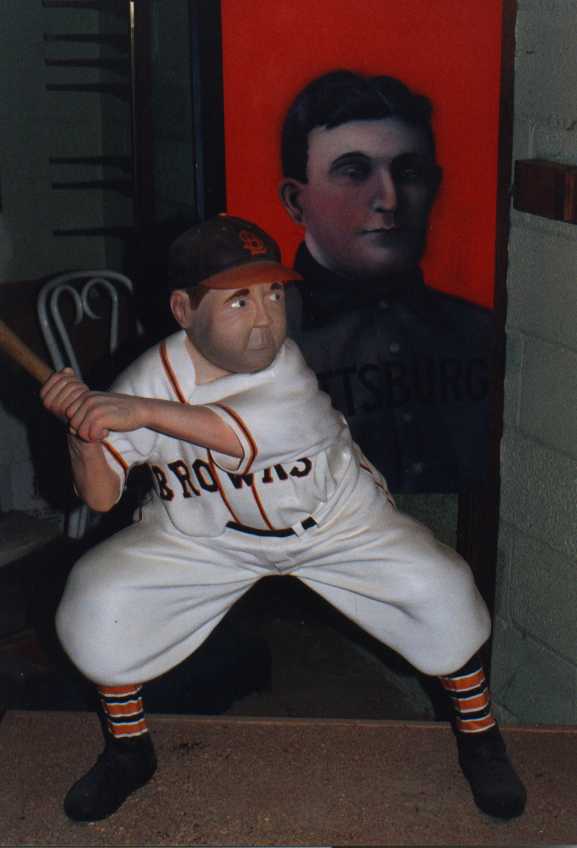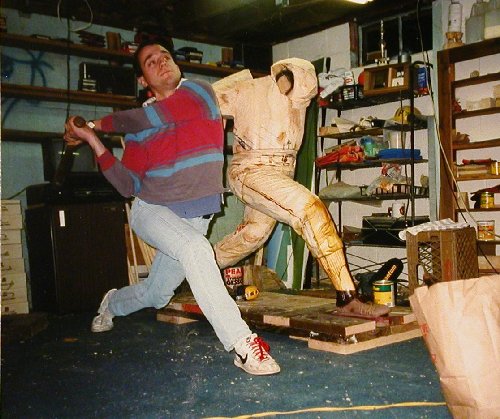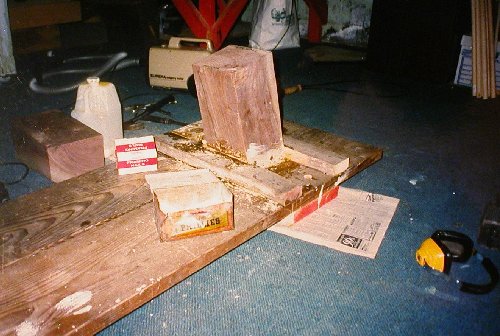Home
Statues
Jackie Robinson
Babe Ruth
The Story
Ephemera
Paintings
Contact Us
After the success of the first Babe Ruth statue, I began thinking
of a follow up piece and again, size played a role in my thinking. This
time, I remembered one of my favorite books, "Veeck as in Wreck", which is the
famous autobiography of innovative baseball franchise owner Bill Veeck. Veeck was a man 50
years ahead of his peers and, as a result, he was deeply loathed by the stodgy, old line
baseball owners. He believed in promotions and marketing before anyone had
ever heard of the terms. He invented Ladies Day at the ballpark and a
thousand other profitable ploys. While he
pioneered the outrageous exploding scoreboard while owner of the White Sox, the thing
he is most famous for, is sending a 3 foot 7 inch man up to bat in the big
leagues in 1951.
The man was Eddie Gaedel and that's his line from The Baseball
Encyclopedia: 1 Game, 1 Base on Balls. The commissioner was so irate that Veeck had pulled this stunt that he ruled that players had to be a minimum
height to play in the majors. That is a ruling, by the way, that the
courts would strike down today as discriminatory.
Veeck had all the proper paperwork completed and filed; he just
didn't mention that the player was 3'7" tall. The plan was for him to
pinch hit and draw a walk and then be pinch run for. It all came off as
planned and it has become the signature stunt of a man who devised many in his
time. Here is the famous photo of the single at bat of Eddie Gaedel.
My thinking was that since what I did with the chisel depicted
SIZE so well, that this was an ideal subject because, after all, this incident
was all about size and nothing else! The other lure for me, I'll be
honest, was the reduced time it would take as well as the reduced materials. It
was important for me to keep up the momentum that I had started so I rode up to
Cooperstown to the Hall of Fame to use the research library they have there.
It is a first class operation and you can obtain rare photos of players for a
fee. The Gaedel incident is famous but there is one AP photo that
continually gets republished and I needed more than that to get the face and
uniform correct. As it turned out, I didn't get but 4 or 5 more photos in
total from the Hall of Fame, but they were like gold to me for accuracy's sake.
The piece, as predicted, was completed fairly quickly and then
was taken out to the various local shows. In 1994, I walked into Lee
Mazzilli's Restaurant on 72nd Street in New York City and approached Mazzilli to
ask him if he would like to place a statue in the restaurant. He did and
he was very nice about it. We trucked both Babe Ruth and Eddie Gaedel into
the place and they stayed there a couple of months. One of the more
unfortunate restaurants, Mazzilli's opened into the teeth of the baseball and
then the NHL strikes and as a result, it didn't survive. The experience
was great for me, however, especially when WFAN in New York would do their shows
from the restaurant.
Not long after that, at a baseball card show at the Meadowlands Hilton, a nice fellow
from New Jersey offered me cash on the spot for Eddie and he got himself a deal.
A tremendous deal. I don't want to go too far into it but at the time, I was
dating a woman who did not like this business and long story short, I thought I
needed a sale to impress her. So I pretty much gave this statue away.
And I'm not crying, just reporting. As a matter of fact, I still hear from
the gentleman-collector who purchased it from time to time and he is thrilled with it and he's
such a nice guy, that I'm glad for him.
And that brings us to the next statue: Mickey Mantle. Now
that I had the confidence that I could complete and sell these things, I decided
to do another popular player from the Yankees. Mantle was the name I heard
most often at the shows because I would ask anyone who would listen: "what would
you like to see me do next?" I heard dozens of suggestions and many of
them were good ideas. Besides the normal baseball stuff of Pete Rose, Joe
Jackson and Sandy Koufax, I head such things as Elvis, Richard Petty and Nixon.
But far and away, the most requested was Mickey Mantle. And beyond that,
the demographic of the typical Mantle nut was a 50-something baby boomer
collector who had cash and could finally afford the toys he always dreamed of.
The time was perfect. And Mickey Mantle had a restaurant on 59th street in
New York City, so naturally, off of my foray with Mazzilli's, I thought that
they'd be a natural either customer or venue in which to display.
The pose was another thing I was ready to ramp up. When I
designed my Babe Ruth statue, I was not even sure I could do the thing and I
wanted more than anything, simply not to fail. With that in mind, and with
no experience, I chose a pose that was rock solid, and thus, not "in-action".
For Mickey, I wanted to tackle a batting pose and convey some strong motion.
I chose a master photo depicting Mickey batting lefty and really just following
through after having walloped one. I love the lines of the photo and the
sheer power it depicts. For me, there was only one Mantle pose and this
was it.
And it's not an easy pose to strike! While I'm doing these
statues, I will grab a bat and do the pose in a mirror hundreds of times in
order to see something I'm having trouble with. Photographing myself doing
the pose can help me get views of angles that the master photo can not deliver.
Oftentimes, I just need to see where the clothing will bunch up while a body is
in that pose. I believe in the gym world, this is called a lunge.
With an ambitious pose, you worry about the engineering and
I was concerned particularly about the side-to-side stability and changed my
anchoring scheme in order to strengthen it. Unlike Babe, where I merely
dowelled the wooden shoes down to the base, I incorporated the stock for the
shoes INTO the base, before working it. That way, I was not attaching the
finished article but working on a solid base all along. What you see in
this photo is the rear foot, only the tip of which would be in contact with the
base when it was done. I also went from a 2-ply to a 3-ply base and while
that adds a lot of weight, no one cares how light it is if it breaks.






